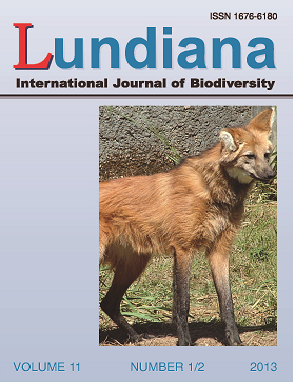Herbivoria foliar em Tabebuia ochracea (Cham.) Standl (Bignoniaceae) em dois estágios sucessionais de uma floresta estacional decidual
DOI:
https://doi.org/10.35699/2675-5327.2013.23842Palavras-chave:
ipê-amarelo, dry forest, herbivory, successionResumo
The aim of this work was to examine the leaf area loss in Tabebuia ochracea (Cham.) Standl in two different successional stages in a tropical dry forest in north of Minas Gerais State, Brazil. The study was conducted at the end of the wet season, when the leaves exhibit an accumulation of lost biomass. In two different areas under distinct status of regeneration, 15 plants were selected and 30 leaves were randomly sampled to determine leaf damage. A higher percentage of leaf damage was observed in trees in the latesuccession stage area than in the early-succession stage area (19.48 ± 2.32 versus 10.77 ± 0.83; F1,30=38.9, p<0,001). These results corroborate others studies performed in tropical dry forest of America and with T. ochracea in the Brazilian cerrado domain. Studies performed in these same areas show that succession leads to an increase of plant-species diversity, increasing the complexity of the environmental structure. Higher plantspecies richness could lead to an increase in richness and abundance of herbivorous insects that, in turn, could increase the herbivory rates at late-succession areas, since chewer insects contribute with 75% or more of all leaf area consumed annually.
Downloads
Publicado
Edição
Seção
Licença

Este trabalho está licenciado sob uma licença Creative Commons Attribution-NonCommercial 4.0 International License.

